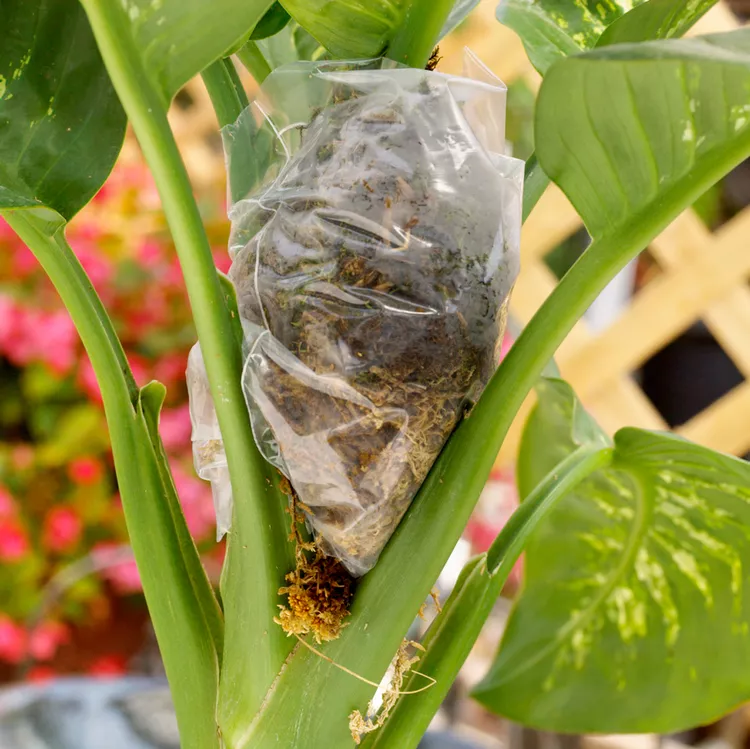Are your houseplants reaching for the sky or needing rejuvenation without the hassle of replanting? Air layering offers a practical solution.
By Lynn Coulter | Updated on December 4, 2023 | Reviewed by David McKinney
Over time, some houseplants outgrow their spaces or lose their lower leaves, becoming leggy and untidy. Rather than parting with your beloved ficus or philodendron, air layering allows you to encourage new root growth higher up on a stem or branch. Once roots are established, you can safely trim the stem below and repot the rejuvenated plant.

Air layering also provides a straightforward method to propagate numerous tropical indoor plants like weeping figs, rubber plants, hibiscus, schefflera, dracaena, dieffenbachia, pothos, and crotons. Here’s everything you need to successfully air layer your houseplants.
Benefits of Air Layering
While planting seeds can be uncertain due to variability in hybrids, and stem cuttings may not always root, air layering offers a reliable cloning method. It involves making a small incision in the plant, allowing new roots to form under a moistened growing medium. Meanwhile, the parent plant continues to thrive. Research indicates that plants propagated through air layering often reach desired sizes faster and exhibit stronger growth compared to other methods.
When is the Best Time for Air Layering?
Air layering is typically performed in spring or mid-summer when plants are actively growing. Use stems from the previous year if air layering in spring, or current year’s growth for summer propagation.
How to Air Layer Indoor Plants
You’ll need:
– Clean, sharp knife
– Moistened sphagnum moss
– Clear plastic wrap
– Powdered rooting hormone
– Toothpick
– Garden twine or floral ties
- Prepare the Plant: Identify where you want roots to develop, removing any leaves from that area. Make an upward 1½ to 2-inch slice at a 30-degree angle, penetrating one-third to two-thirds through the stem or branch.
- Apply Rooting Hormone: Use a toothpick to keep the incision open and apply powdered rooting hormone.
- Encase in Moss: Cover the treated area with damp sphagnum moss, securing it with clear plastic wrap or a plastic bag. Use twine or ties to hold it in place.
-
Monitor and Maintain: Regularly check the moss, moistening it with water as needed. Roots typically form within two weeks to three months, at which point they should be a few inches long.
-
Separate and Repot: Once roots are well-developed, carefully remove the plastic wrap. Trim the stem below the roots and leave the moss intact to protect the young roots until potting.
Air layering is an effective technique for rejuvenating or multiplying houseplants, offering a straightforward method to manage growth and expand your indoor garden effortlessly.

